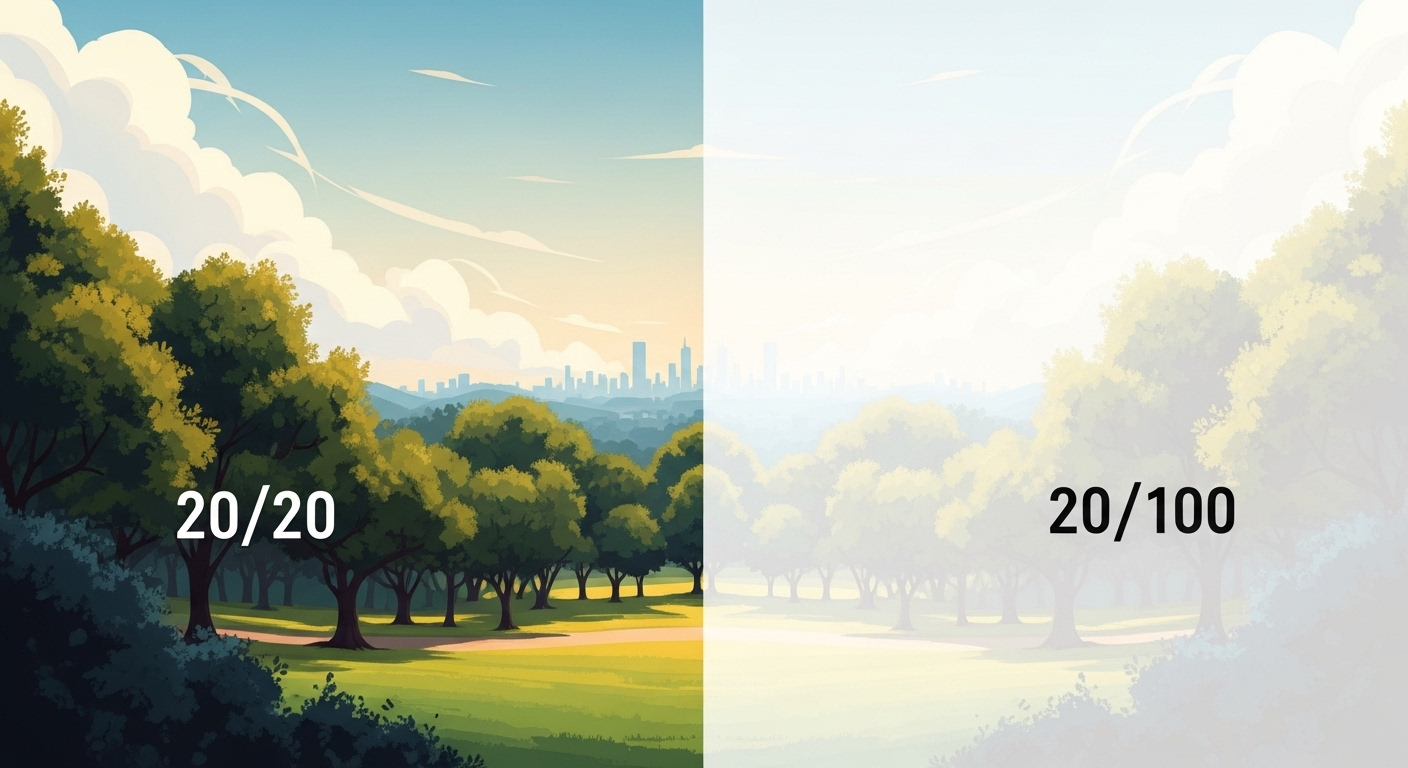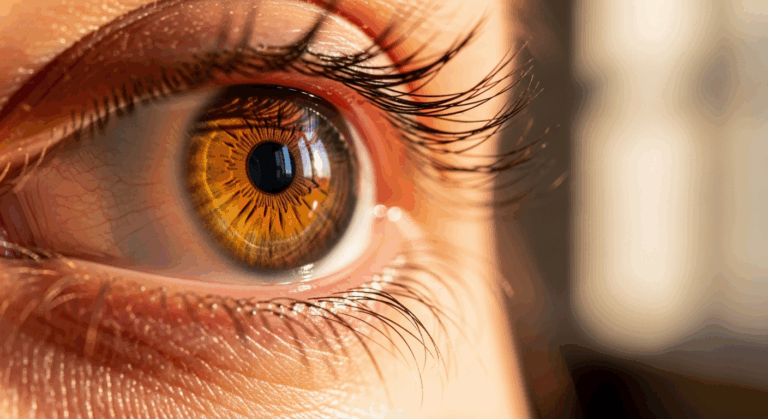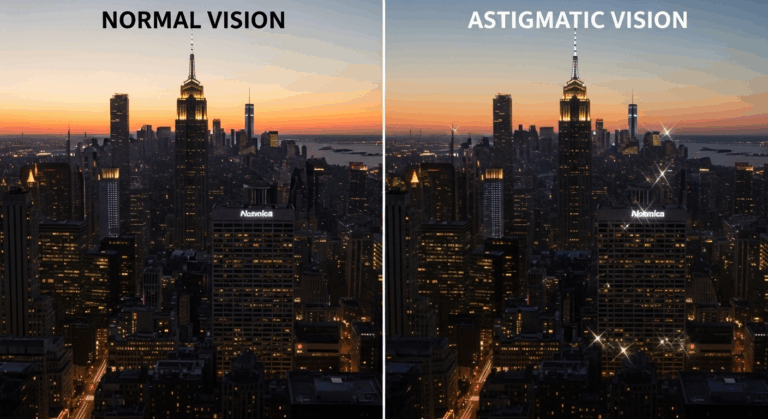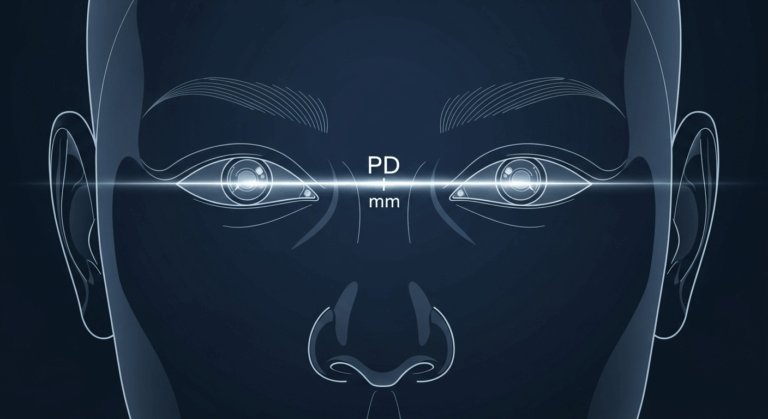What is 20/100 vision?
You’ve probably seen that fraction on an eye chart and wondered what it actually means. In plain terms, 20/100 vision means you can see at 20 feet what a person with “normal” vision can see at 100 feet. Think of it like a camera’s zoom: someone with 20/20 vision is at the default zoom; with 20/100, you’re zoomed out and details at a distance get softer or disappear.
Why the numbers matter
The first number is the testing distance (usually 20 feet in the U.S.). The second number is the distance at which a person with standard vision would identify the same line on the chart. So the bigger that second number, the poorer the distance clarity.
Quick analogy
If vision were a billboard, a person with 20/20 eyesight reads the small print from the sidewalk. A person with 20/100 has to stand five times closer to read the same text.
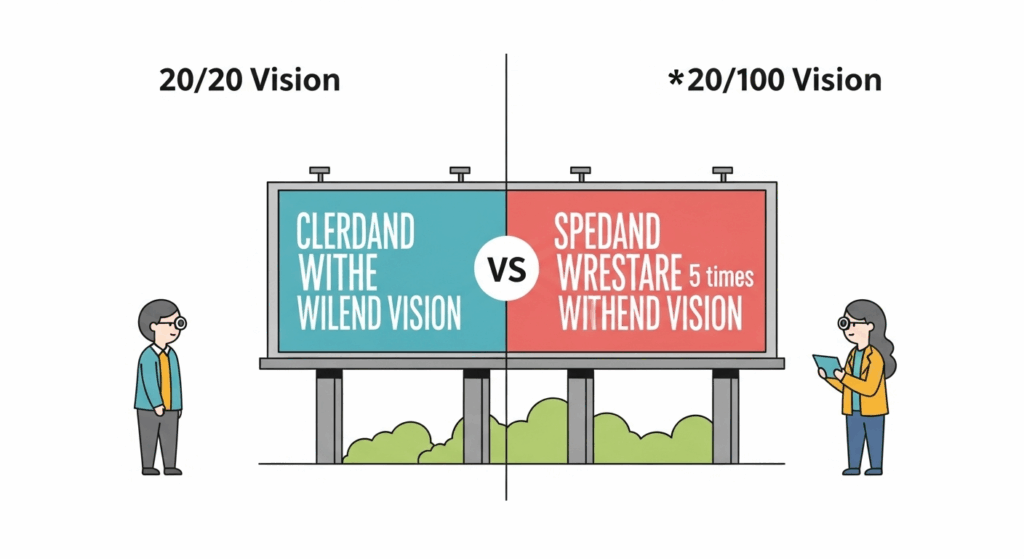
What does 20/100 vision look like? (practical examples)
It helps to imagine everyday scenes.
Street signs and driving

At highway speeds, letters on road signs that someone with 20/20 vision reads easily will be fuzzy or unreadable until you get much closer. That’s why people with uncorrected 20/100 often have trouble with night driving or spotting distant hazards.
Faces, TVs, and text
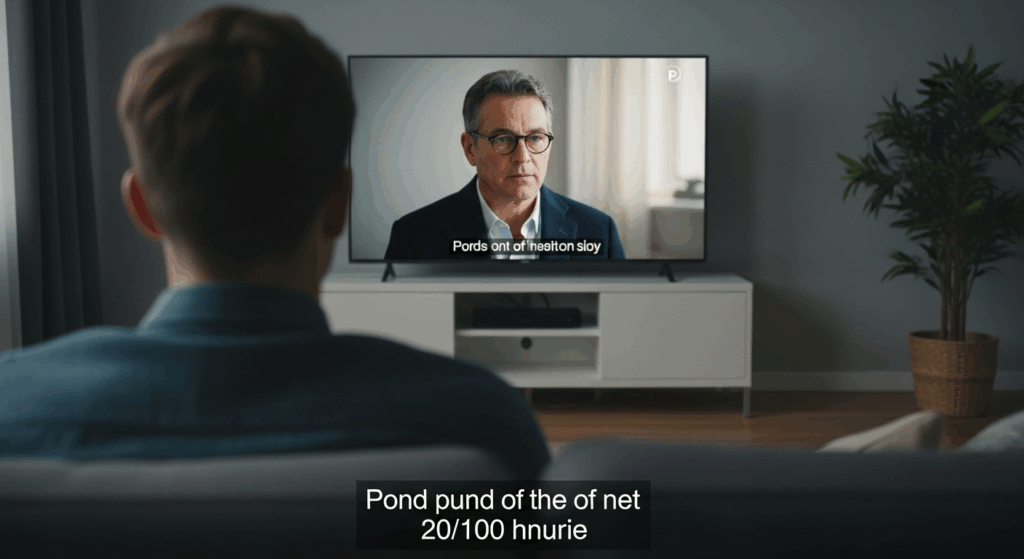
From a moderate distance, faces lose sharp edges — you might recognize someone, but smaller features blur. Small-print text on a menu or a subtitle on the TV might be unreadable from the usual sitting distance.
Is 20/100 vision really bad?
Short answer: it’s worse than average and can affect daily life, but it’s not automatically catastrophic.
How doctors and the law view it
Many countries set driving or work vision requirements around something like 20/40 for an unrestricted license. In contrast, legal blindness in many places is defined as 20/200 or worse in the better-seeing eye. So 20/100 sits between “mild annoyance” and “serious limitation” — it depends on your needs and whether it can be corrected.
Real-life impact
If you need to read screens, judge distances, or drive at night, 20/100 can be a real handicap. But if it’s corrected to a clearer level with glasses or contacts, most people carry on normally.
Is 20/100 nearsighted or farsighted?
Most of the time, a distance acuity of 20/100 is caused by nearsightedness (myopia) — your eye focuses images in front of the retina, so distant objects look fuzzy. But don’t jump to conclusions: other issues (like cataracts, macular disease, optic nerve problems, or amblyopia) can also reduce acuity. The only way to know for sure is a full eye exam.
Can 20/100 vision be corrected?
Good news: often yes — but the answer depends on the cause.
Glasses and contact lenses
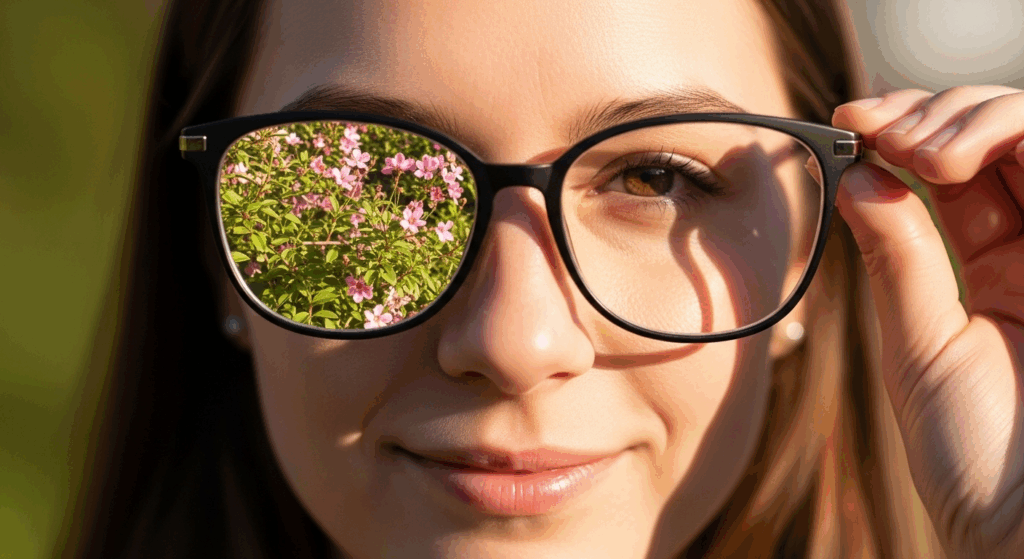
If the drop in acuity is due to a refractive error (myopia or astigmatism), glasses or contacts frequently restore much or all of the lost sharpness. We see many patients who come in struggling and leave with crisp distance vision after a simple refraction.
Refractive surgery and other options
Procedures like LASIK, PRK, or lens-based surgeries can reduce or eliminate dependence on corrective lenses for many people with myopia. Not everyone’s a candidate — things like corneal shape, thickness, and overall eye health matter. A thorough specialist evaluation will tell you what’s realistic.
When correction doesn’t help
If the cause is structural (retina, optic nerve, or advanced cataract), glasses may not bring vision to 20/20. In those cases, treatment targets the underlying disease (e.g., cataract surgery, medical therapy for macular disease, or low-vision rehabilitation).
Low-vision aids
If best-corrected vision remains limited, magnifiers, electronic readers, telescopic glasses, and training can make daily tasks much easier. Technology today is surprisingly empowering.
How eye doctors decide whether 20/100 can be fixed
During a full exam, your clinician will:
- Measure uncorrected and best-corrected visual acuity on an eye chart.
- Perform a refraction to find a glasses/contact prescription.
- Examine the front and back of the eye (cornea, lens, retina) — often with dilation.
- Run additional tests if needed (visual fields, retinal imaging, etc.).
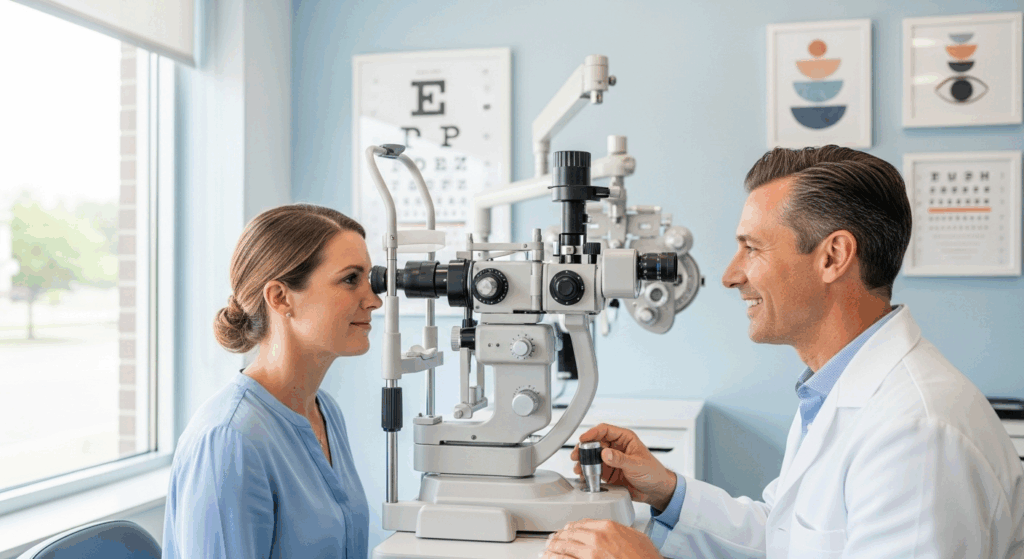
If your vision improves with a lens, that’s usually reassuring — it points to a refractive cause. If it doesn’t, further investigation is needed.
What if only one eye is 20/100? (how bad is it in one eye)
Having 20/100 in one eye and better vision in the other is common. It may not feel devastating, but it has consequences:
- Depth perception can be impaired because binocular vision is reduced.
- You’re more dependent on the stronger eye; if that eye later has problems, your overall function could drop significantly.
- The cause matters — amblyopia (lazy eye), previous injury, or retinal disease could be responsible, and treatment varies.

We usually encourage people to address even one-sided vision loss — catching issues early gives more treatment options.
Practical advice — when to see an eye doctor now
You should book an eye exam if you:
- Suddenly notice a major decline in vision.
- Can’t read standard-distance things even with your current glasses.
- See flashes, lots of new floaters, or a shadow/curtain in your vision — these need urgent attention.
- Have chronic issues like glare, eye pain, or recurring headaches tied to vision.
Routine eye checks are also worth it — they often catch problems before you do.
Conclusion
20/100 vision means your distance sharpness is reduced — you need to be much closer to see what others can see farther away. It’s commonly due to myopia and is often correctable with glasses, contacts, or surgery, but not always. If you or someone you care about has 20/100 in one or both eyes, the best move is a comprehensive eye exam: it clarifies the cause and opens the door to effective solutions. Remember, early action saves options.
